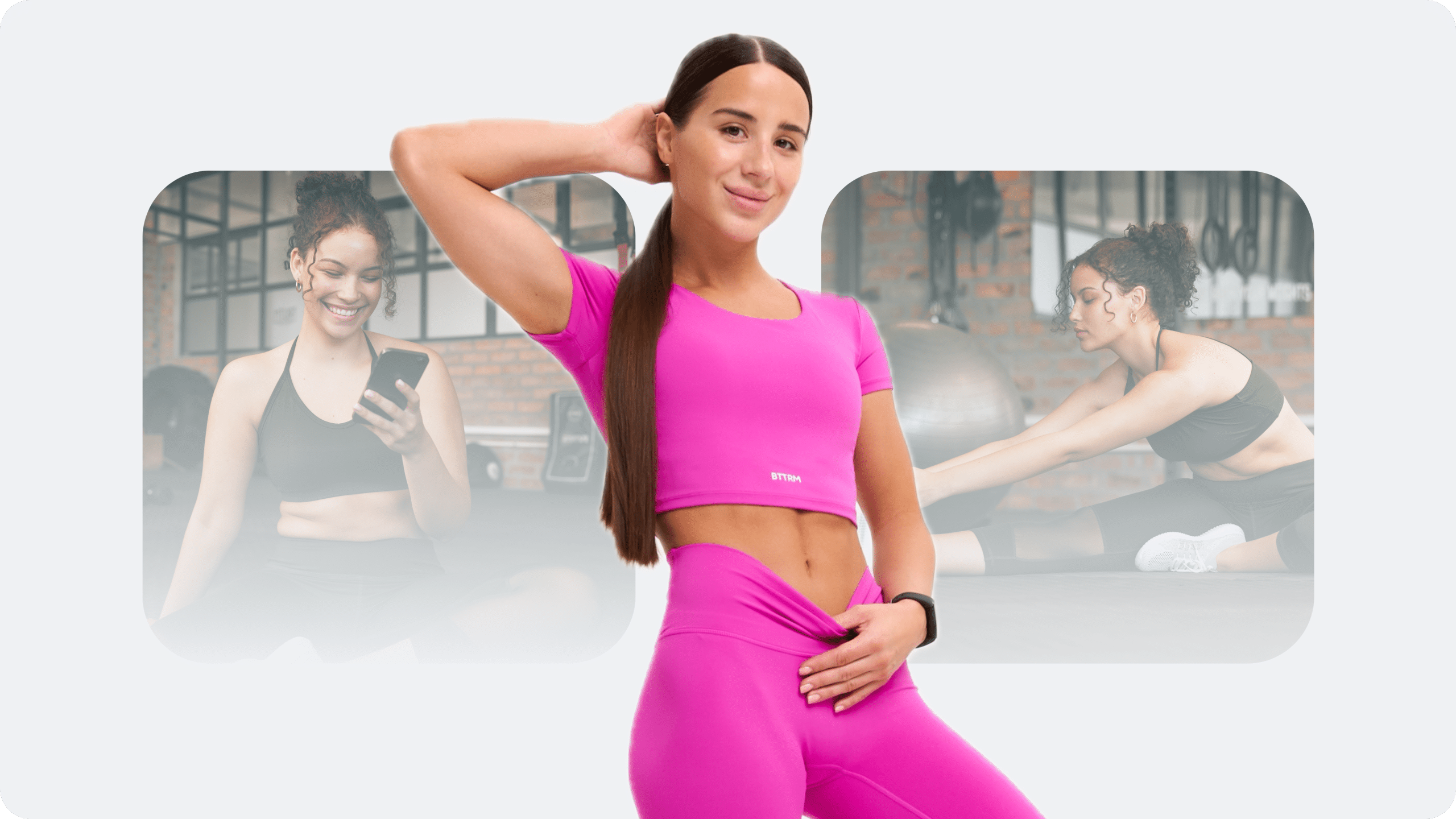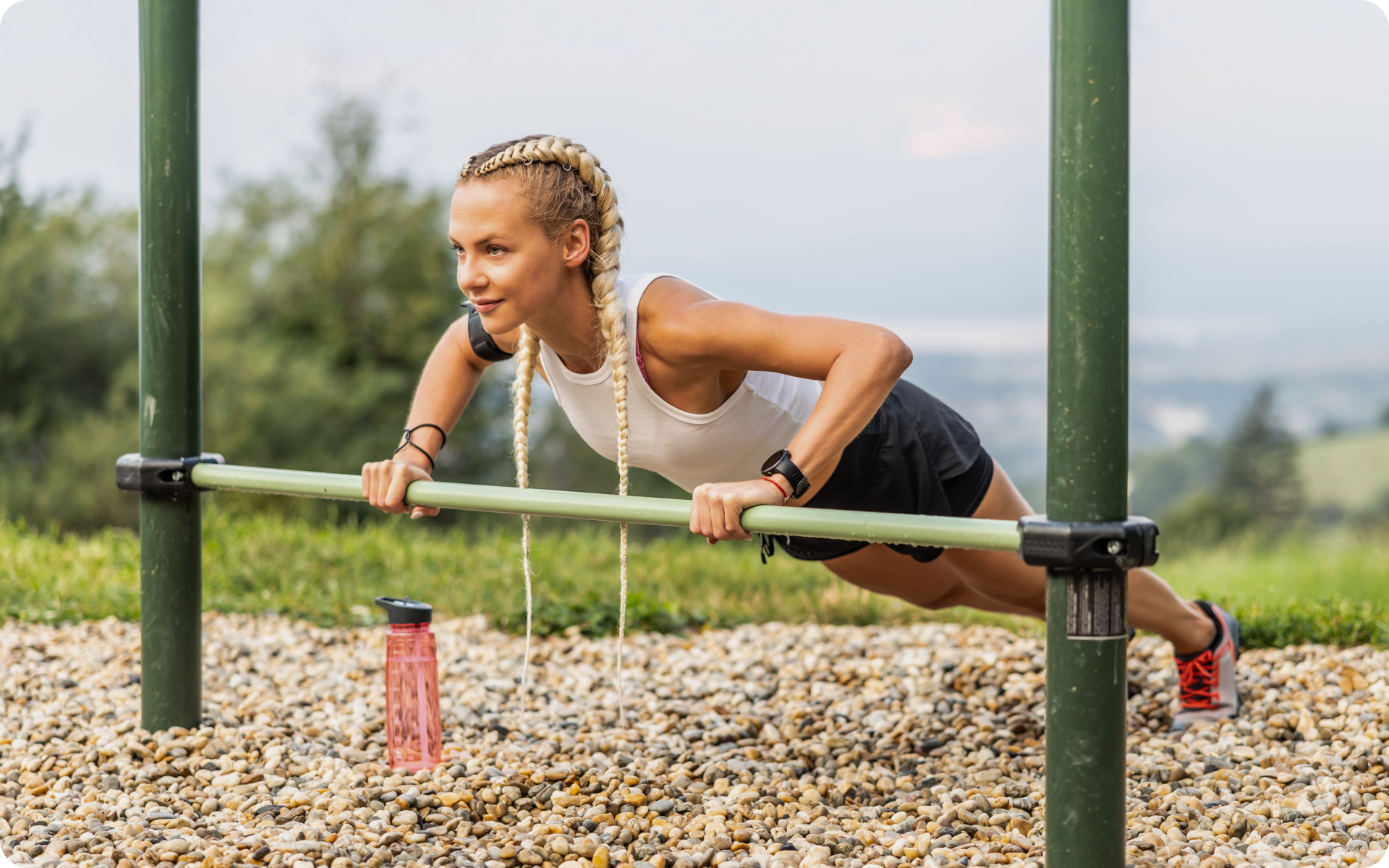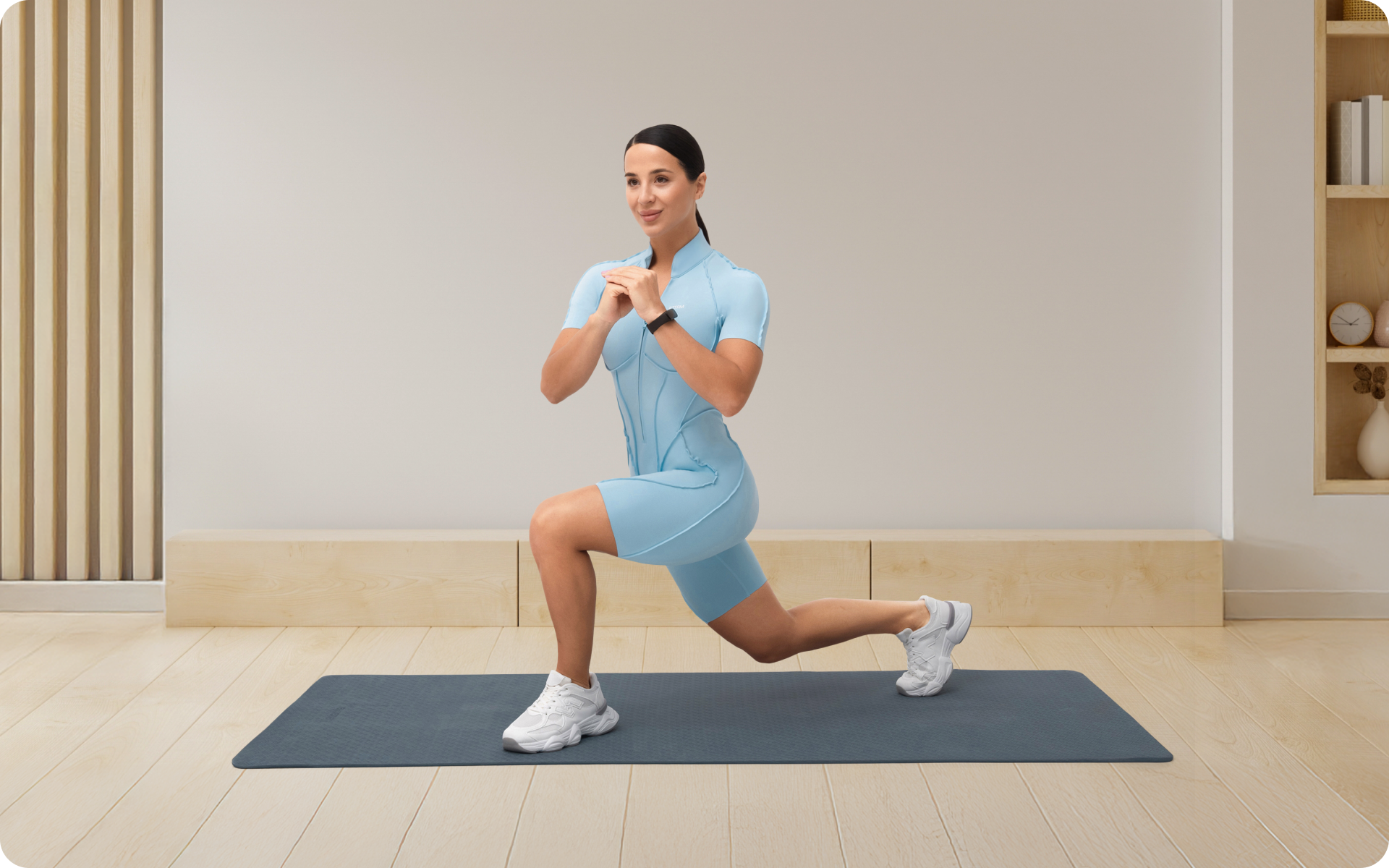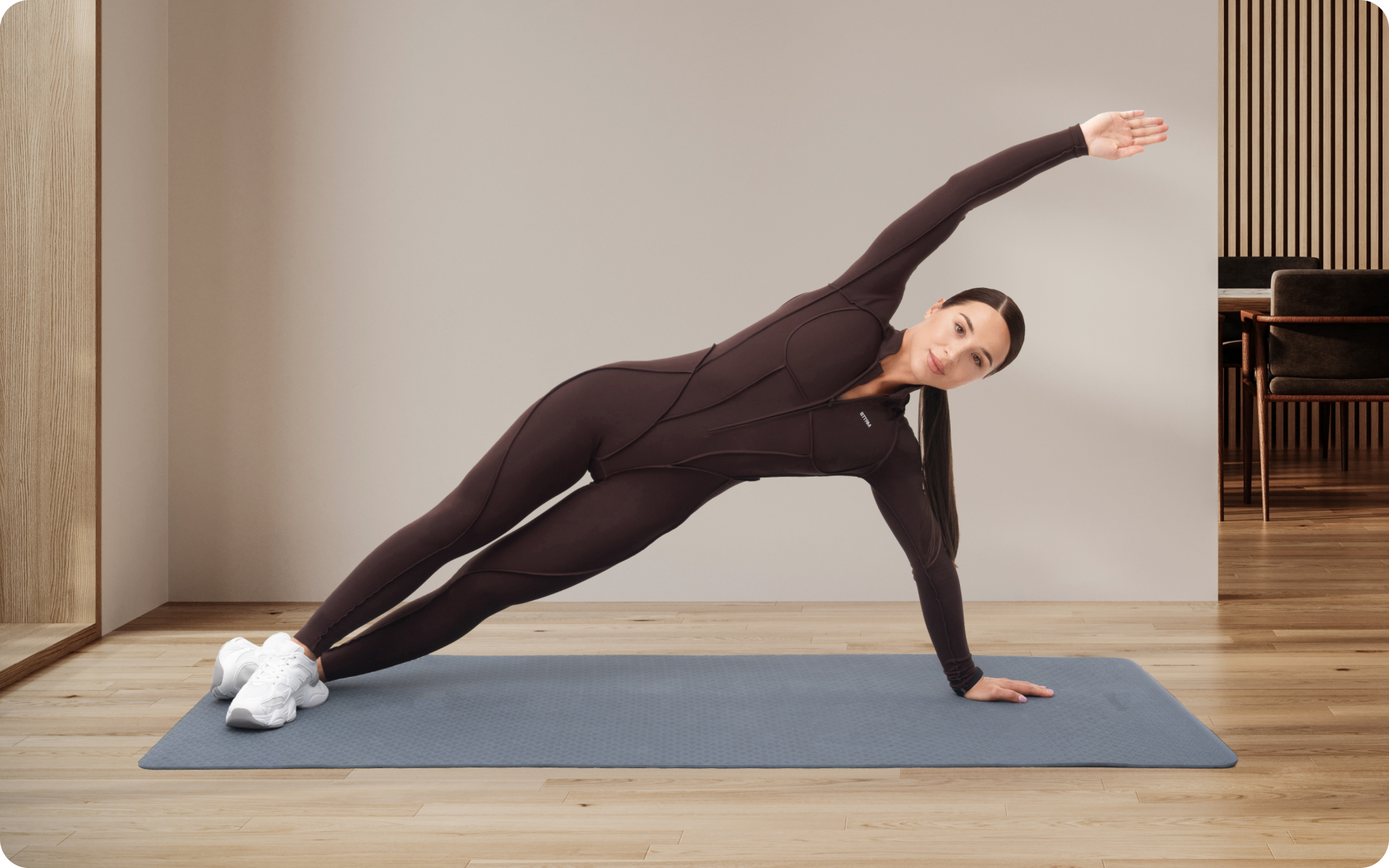Calisthenics, otherwise known as bodyweight training, is an ancient form of physical exercise that emphasizes the use of one’s own body weight to enhance physical fitness. The name itself hints at its Greek origins, derived from ‘kalos’ meaning beautiful and ‘sthenos’ meaning strength, reflecting the aesthetic blend of physicality and functionality (1).
Thanks to influencers and social media, calisthenics has seen a resurgent popularity, celebrated for its accessibility and the freedom it offers practitioners.
Gymnastics, on the other hand, has an equally storied history, evolving into a highly disciplined sport with specific apparatus and competitive elements. For over a century, gymnastics has been featured prominently in the Olympics, showcasing the pinnacle of human agility, coordination, and strength (11).
Now, you may wonder about the nuanced differences between these two practices. Is one more suited for developing sheer strength than the other?
Is There a Difference Between Calisthenics and Gymnastics?
Yes, there’s a fundamental Calisthenics vs gymnastics difference. While both disciplines utilize bodyweight movements, they have distinct characteristics, goals and practices.
Calisthenics:
- Focuses on Strength and Flexibility: Calisthenics involves using one’s own body weight for resistance in exercises. It aims to improve strength, flexibility, and endurance without the use of equipment (3).
- Exercises: Common calisthenics exercises include push-ups, pull-ups, squats, and dips. These exercises can be performed anywhere, making calisthenics accessible and versatile.
- Goals: The primary goal is to achieve total body fitness and strength through minimalistic workouts. It’s often used for physical conditioning and can serve as a foundation for other types of physical activities.
Gymnastics:
- Structured and Diverse Apparatus: Gymnastics is a competitive sport that includes exercises requiring balance, strength, flexibility, agility, coordination, and endurance. The movements involved in gymnastics contribute to the development of the arms, legs, shoulders, back, chest, and abdominal muscle groups, but the development of these muscle groups is not the underlying purpose of the sport.
- Apparatus: In gymnastics, athletes perform on various apparatuses such as the pommel horse, rings, high bar, and parallel bars for men, and uneven bars and balance beam for women, in addition to vault and floor exercise for both men and women(9).
- Competitive Aspect: Gymnastics is recognized as an Olympic sport and has a structured set of rules governed by organizations like the International Federation of Gymnastics (FIG) (8). Athletes perform routines that are evaluated by judges based on their execution, difficulty, and artistic presentation.
Key Differences:
- Purpose and Scope: Calisthenics is generally practiced for personal fitness, strength, and flexibility without the competitive aspect, whereas gymnastics is a disciplined and competitive sport with specific routines and evaluations.
- Equipment and Environment: Calisthenics can be done with minimal to no equipment, making it accessible in various settings, while gymnastics requires specialized equipment and facilities.
- Skill and Complexity: While both disciplines require a high level of skill, gymnastics encompasses a wider range of complex movements and techniques, often requiring years of dedicated training, especially at the competitive level.
Intense sweat sessions, working weight loss tips, lip-smacking recipes come in one package with the BetterMe app. And all of it is at your fingertips, start transforming your life now!
Are Gymnasts Stronger Than Calisthenics Athletes?
Comparing the strength of gymnasts to individuals who practice calisthenics isn’t so straightforward because the concept of strength can vary significantly based on the context in which it’s applied. Both disciplines develop strength, but they do so in ways that are tailored to their specific requirements and objectives.
Here’s how each discipline cultivates strength and why a direct comparison might not capture the full picture:
Gymnasts:
- Develop a high level of all-around physical strength, with a particular emphasis on core strength, as well as the strength needed to perform on various apparatuses.
- Train for explosive power to execute flips and vaults, as well as static strength for holding positions on the rings, pommel horse, or balance beam.
- Strength training in gymnastics is highly specialized, focusing on the precise control and movement necessary to perform complex routines with grace and accuracy.
Calisthenics Practitioners:
- Focus on bodyweight exercises that improve muscular endurance and strength. This includes the ability to perform high repetitions of exercises like pull-ups, push-ups, dips, and squats.
- Develop functional strength that can be applied in everyday activities or other sports, with an emphasis on mobility, flexibility, and endurance.
- Many advanced calisthenics movements, such as planches, front levers, and human flags, require significant strength, especially in the core, shoulders, and arms.
Learn more about the fundamental principles and everything you need to know in our previous blog post – The Fundamentals of Calisthenics
Key Considerations:
- Specialization vs. Generalization: Gymnasts often train with a higher degree of specialization, focusing on the unique demands of their sport. Calisthenics practitioners may have a more generalized approach to strength training, emphasizing functional fitness that applies across a range of activities.
- Type of Strength: Gymnastics training develops a mix of explosive power, static strength (isometric holds), and dynamic strength (6). Calisthenics tends to focus more on endurance, strength, functional fitness, and the ability to manipulate one’s body weight in various forms (2).
- Comparability: It’s challenging to declare one group “stronger” than the other without specifying the type of strength being measured.
For instance, a gymnast might excel in explosive strength and precision required for gymnastics routines, while a calisthenics athlete might outperform in endurance and the ability to execute high-repetition bodyweight exercises.
Read more: How Many Calories Should A Pregnant Woman Eat: The Truth Behind “Eating For Two”
Are Gymnasts Stronger Than Bodybuilders?
Comparing the strength of gymnasts to bodybuilders is like comparing apples to oranges because they train for entirely different outcomes and use different measures of “strength.”
The type of strength each athlete develops is tailored to the specific requirements of their discipline, which means their strengths are manifested in different ways.
Gymnasts:
- Gymnasts develop a high level of relative strength and functional strength. This means they are exceptionally strong in relation to their body weight, allowing them to perform complex maneuvers, hold difficult positions, and execute precise movements with control and stability.
- Their training emphasizes balance, agility, endurance, and the ability to exert force in a variety of positions and movements. They possess significant core strength, explosive power, and isometric strength (the ability to hold static positions).
Bodybuilders:
- Bodybuilders focus on absolute strength and muscle hypertrophy (increasing muscle size). Their primary goal is to maximize muscle mass and definition for aesthetic purposes rather than optimizing functional movement or athletic performance (12).
- While bodybuilders certainly develop considerable strength through lifting heavy weights, their training is more about increasing the size and appearance of muscles rather than enhancing the functional capability or efficiency of those muscles in performing complex physical tasks.
Key Considerations:
- Type of Strength: Gymnasts may excel in exercises that require controlling and moving their body weight in complex ways, such as pull-ups, rope climbs, and various static holds. Bodybuilders might outperform in lifting heavy weights and exercises focusing on specific muscle groups.
- Application of Strength: The strength of a gymnast is highly functional and applicable to a wide range of movements and tasks, emphasizing agility, flexibility, and endurance. A bodybuilder’s strength is more specialized towards lifting heavier loads, often in a more controlled and less dynamic environment.
- Comparability: It’s challenging to make a direct comparison because the goals, methods, and definitions of success in gymnastics and bodybuilding are so different. A gymnast could be considered “stronger” in terms of relative bodyweight strength and functional ability, while a bodybuilder could be considered “stronger” in terms of absolute strength and the ability to lift heavier weights.
What Is Better Than Calisthenics?
Determining what is “better” than calisthenics depends on what one is looking to achieve through their exercise regimen. Calisthenics is excellent for building functional strength, flexibility, endurance, and improving overall body control using one’s body weight.
However, depending on your objectives, other forms of exercise might better suit your needs:
1. Weight Training
- Goal: Building muscle mass and strength more rapidly (17).
- Why It Might Be Better: Offers precise control over the amount of resistance, allowing for targeted muscle development and potentially faster gains in strength and size.
2. Yoga
- Goal: Enhancing flexibility, balance, and mental wellness (7).
- Why It Might Be Better: Apart from physical benefits, yoga incorporates a significant mental and spiritual component, focusing on meditation, breath control, and mindfulness.
3. Pilates
- Goal: Improving core strength, posture, and alignment.
- Why It Might Be Better: Pilates offers a more structured approach to core strengthening and body alignment with a focus on low-impact exercises, which may be beneficial for rehabilitation and injury prevention (16).
4. Running or Cycling
- Goal: Boosting cardiovascular health and endurance (13) (14).
- Why It Might Be Better: These activities are specifically tailored to improve cardiovascular fitness and endurance, along with burning calories effectively.
5. Swimming
- Goal: Full-body workout and cardiovascular improvement with minimal joint impact.
- Why It Might Be Better: Provides a full-body workout that’s low impact, making it ideal for people with joint issues or those seeking a form of exercise that reduces the risk of injury (5).
6. CrossFit
- Goal: Building strength and conditioning through varied and high-intensity movements (4).
- Why It Might Be Better: Combines elements of weightlifting, gymnastics, and cardiovascular training for a comprehensive, high-intensity workout that can be more dynamic and varied than traditional calisthenics routines.
7. Sports
- Goal: Enhancing specific skills, team interaction, and enjoyment.
- Why It Might Be Better: Engaging in sports can provide social interaction, specific skill development, and an enjoyable way to stay active, which might offer more motivation than solo workouts.
No single form of exercise is universally “better” than another. The choice between gymnastics and calisthenics depends on personal interests, lifestyle, physical condition, and fitness goals. Often, a combination of different activities offers the most benefits, keeping the routine balanced, engaging, and effective in addressing various aspects of physical fitness and mental well-being (15).
Whether you’re looking to simply pep up your fitness routine, jazz up your diet with mouth-watering low-calorie recipes or want to get your act together and significantly drop that number on your scale – BetterMe app has got you covered! Improve your body and revamp your life with us!
FAQs
Are Calisthenics Better for Sports?
Calisthenics can be an excellent form of training for sports that require a combination of strength, agility, and endurance (2). However, depending on the specific demands of a sport, other forms of exercise might also be beneficial in improving athletic performance.
Do Gymnasts Train Legs?
Yes, gymnasts train their legs through various exercises such as jumps, leaps, and landings. They also incorporate leg strength training into their routines to improve overall functional movement and stability (10).
However, compared to bodybuilders who often prioritize leg development for aesthetic purposes, gymnasts focus on developing balanced strength throughout their entire body.
Do Gymnasts Squat?
While squats are not a staple exercise in gymnastics training, they do incorporate squat-like movements such as jumps and landings. Additionally, gymnasts often perform variations of lunges, leg extensions, and other lower body exercises to develop leg strength and stability. The primary focus is on functional movement rather than isolated muscle development.
The Bottom Line
Comparing calisthenics to gymnastics or bodybuilding can be challenging because each form of exercise has its unique strengths and benefits. Ultimately, the “better” choice depends on individual preferences and goals. Incorporating a variety of exercises is often the most effective way to achieve overall physical fitness.
Whatever form of exercise you choose, maintaining proper technique, consistency, and a balanced routine will help you reach your fitness goals efficiently and safely.
DISCLAIMER:
This article is intended for general informational purposes only and does not serve to address individual circumstances. It is not a substitute for professional advice or help and should not be relied on for making any kind of decision-making. Any action taken as a direct or indirect result of the information in this article is entirely at your own risk and is your sole responsibility.
BetterMe, its content staff, and its medical advisors accept no responsibility for inaccuracies, errors, misstatements, inconsistencies, or omissions and specifically disclaim any liability, loss or risk, personal, professional or otherwise, which may be incurred as a consequence, directly or indirectly, of the use and/or application of any content.
You should always seek the advice of your physician or other qualified health provider with any questions you may have regarding a medical condition or your specific situation. Never disregard professional medical advice or delay seeking it because of BetterMe content. If you suspect or think you may have a medical emergency, call your doctor.
SOURCES
- Build Mass Using Just Your Bodyweight with Our Complete Guide to Calisthenics (2024, menshealth.com)
- Calisthenics: Benefits, Types of Exercises, and More (2024, webmd.com)
- Calisthenics – Bringing Back a Classic Workout (2022, issaonline.com)
- CrossFit® – Development, Benefits and Risks (2020, ncbi.nlm.nih.gov)
- Effect of regular swimming exercise on the physical composition, strength, and blood lipid of middle-aged women (2015, ncbi.nlm.nih.gov)
- Evaluating the physical and basic gymnastics skills assessment for talent identification in men’s artistic gymnastics proposed by the International Gymnastics Federation (2018, ncbi.nlm.nih.gov)
- Exploring the therapeutic effects of yoga and its ability to increase quality of life (2011, ncbi.nlm.nih.gov)
- FIG – About (n.d., gymnastics.sport)
- Gymnastics 101: Apparatus Guide (2024, nbcolympics.com)
- Gymnastics Conditioning: 7 Gymnast Strength Training Moves (2021, masterclass.com)
- How gymnastics became a deeply beloved Olympic sport (2021, nationalgeographic.com)
- How To Build a Bodybuilder’s Physique (n.d., muscleandfitness.com)
- Meta-Analyses of the Effects of Habitual Running on Indices of Health in Physically Inactive Adults (2015, ncbi.nlm.nih.gov)
- Meta-Analyses of the Effects of Habitual Running on Indices of Health in Physically Inactive Adults (ncbi.nlm.nih.gov)
- Physical activity for health (2015, ncbi.nlm.nih.gov)
- Pilates: how does it work and who needs it? (2011, ncbi.nlm.nih.gov)
- Resistance training – health benefits (n.d., betterhealth.vic.gov.au)












